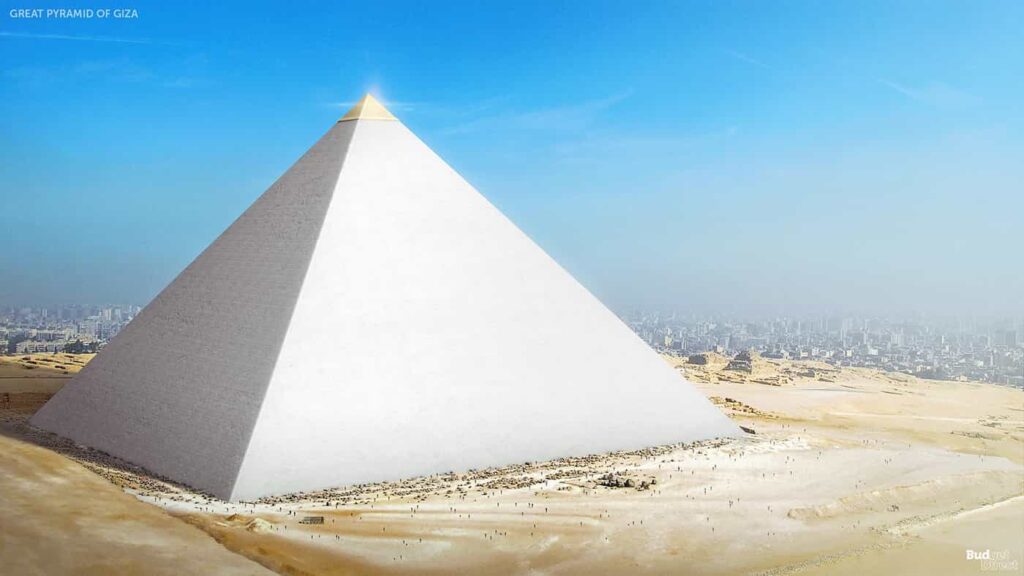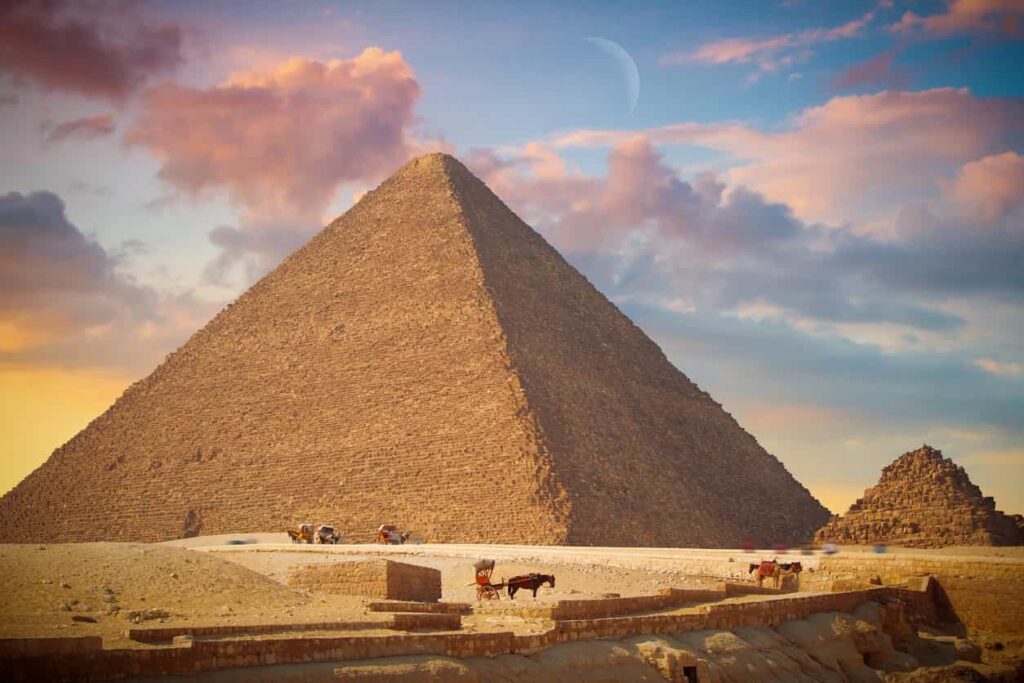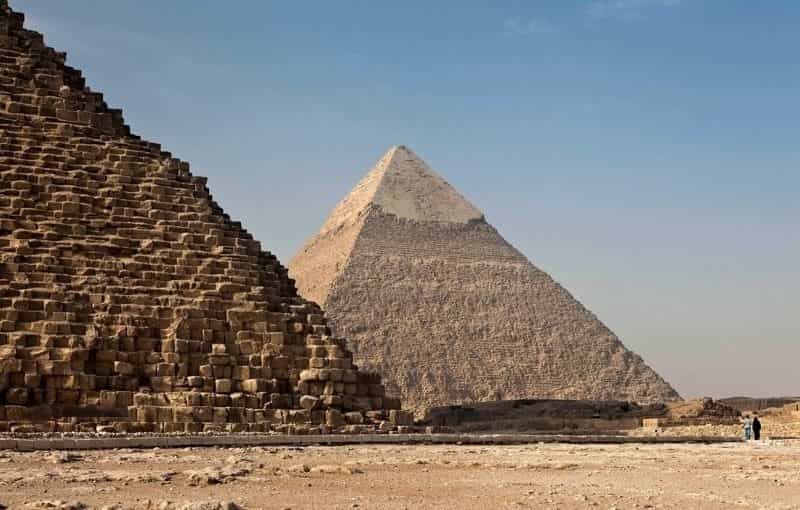Have you ever wondered what the Egyptian pyramids looked like when they were first built? These iconic structures have been standing for thousands of years and are a testament to human ingenuity and engineering. However, over time, the pyramids have changed due to the reuse of materials and looting. So, what did they look like when they were first constructed?
When the ancient Egyptian pyramids were first erected, both at Giza and elsewhere, they did not have the sandy-brown appearance they usually do today. Instead, they were covered in a layer of shiny sedimentary rock.
Mohamed Megahed, Adjunct Professor at the Czech Institute of Egyptology at Charles University in Prague, explains that “all the pyramids were covered with fine white limestone.”
This limestone cladding would have given the pyramids a smooth, polished coating that shone brilliantly white in the Egyptian sun. The builders used about 6.1 million tons (5.5 million metric tons) of limestone during the construction of the Great Pyramid of Giza alone, according to the National Museums Scotland, which displays one of the original limestone blocks.
The Great Pyramid, also known as the Khufu Pyramid after Pharaoh Khufu, who commissioned it during his reign (2551 BC to 2528 BC), is the largest and oldest of all standing pyramids at Giza. However, its facing stones were later reused for other construction work under Egyptian rulers, as was the case with most pyramid hulls.
According to Egyptologist Mark Lehner, the casing stones of the Giza pyramids began to be gouged out during the reign of Tutankhamun (between 1336 and 1327 BC) and continued until the 12th century AD. The BBC reported that an earthquake in AD 1303 would have also loosened some of the stones.
Today, the Giza pyramids still retain some of their original limestone facing, although it appears more eroded than in antiquity. Mohamed Megahed, an Adjunct Professor at the Czech Institute of Egyptology at Charles University in Prague, said: “It can be seen on top of the Pyramid of Khafre in Giza.”
The Pyramid of Khafre, named after Pharaoh Khafre, who reigned from 2520 BC to 2494 BC, still has excess casing stones around its top, giving the impression of a second top fitted over the first. The Pyramid of Menkaure, named after Pharaoh Menkaure, who reigned from 2490 BC to 2472 BC, also had red granite cladding around its lower steps.
The pyramids originally housed capstones, called pyramidions, covered in electrum, a mixture of gold and silver, according to Megahed. Most of the pyramidions have been lost over time, but some examples remain in museums. These specimens reveal that the pyramidions were carved with religious images.
For example, the British Museum preserves a limestone pyramidion covered in hieroglyphs from Abydos, an archaeological site in Egypt, depicting the deceased worshiping the god Osiris and being mummified by the jackal-headed Anubis.
Experts believe that the Great Pyramid of Giza would have shone like a star when sunlight fell on it due to the polished limestone with which it was clad and the shiny metallic pyramidion at its tip.









